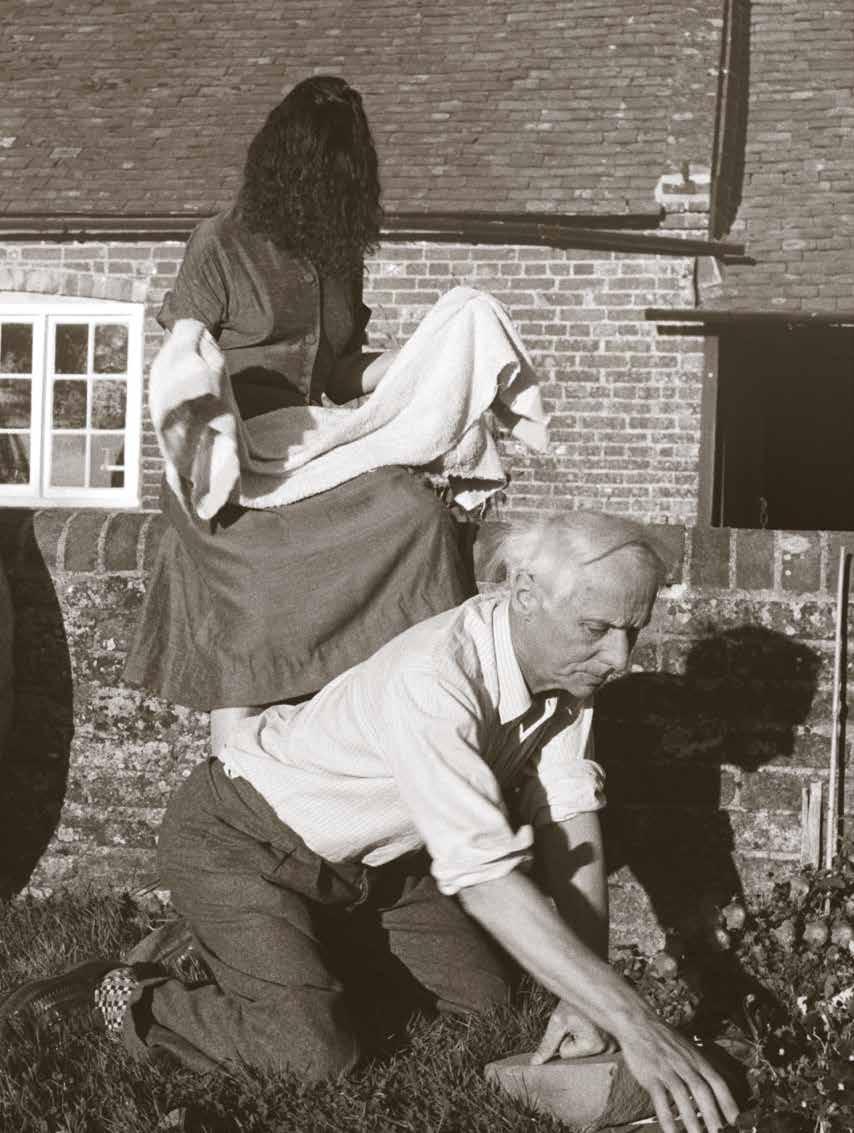
BY ANTONY PENROSE
The extreme weather at the end of 1949 was a rough introduction for my parents, Lee and Roland, to the hardships of living in the country. In an undated letter1 to her parents Lee wrote;
… one of the biggest storms the country ever had. Tons of rain and a 50 mile (an hour) gale. The electricity held out but the telephone was cut off for three days. … floods over the road so deep we were afraid of the ignition, cows marooned on islands.
Their guests that weekend were Jeremy Hutchinson and his wife Peggy Ashcroft, the actress. Jeremy, later to be Baron Hutchinson of Lullington QC, met, my father, when Roland invited Jeremy, then a young lawyer, to defend him on a charge of ‘obstructing the highway’. In 1948 the newly formed ICA (Institute of Contemporary Art) founded by Roland and Herbert Read, mounted the exhibition 40 Years of Modern Art in the Academy Hall in Oxford Street. On the corner beside the hall, in an area cleared by a Luftwaffe bomb, they placed on a high plinth Kneeling Woman2 by the Irish sculptor F.E. McWilliam. So many people stopped to admire this erotic and mysterious sculpture they blocked the street, stopping the traffic. The police charged Roland with obstruction and he was a summonsed to appear in court. Before proceedings began the senior magistrate spoke. “If – God forbid – my house was to catch fire and a crowd of people assembled
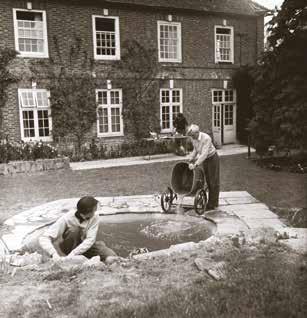
to watch, blocking the street, would I then be charged with obstruction? This ridiculous case is dismissed”. Jeremy was crestfallen. He relished using his already well-known cross examination skills. Among many other high profile cases Jeremy would later successfully defend Christine Keeler and Penguin Books in the Lady Chatterley’s Lover trial. Much later he was to be the Chairman of The Elephant Trust, set up by Roland and Lee to fund projects by emerging artists that fell outside of the usual funding remits. I became a trustee in the late 1970’s and being at meetings with Jeremy was for me a highly privileged tutorial in contemporary art and diplomacy. But in 1949 Farleys despite is rustic crudeness was an intimate haven. Lee’s letter continues about Jeremy and Peggy;
They are both very cosy and comfortable people, good conversationalists and love the country, though this time they did not see any of it. We sat around by roaring fires and read and gossiped. The house stayed pretty snug, no leaks in the main part though at one time we had to put the kitchen range out as the rain came down the chimney. The old bake oven kitchen isn’t really water proof but we knew that and hadn’t left anything in it for the winter which could come to harm. … We got linoleum down on the nursery floor … for Tony, because although they are beautiful old boards it’s too cold and rough for Tony at his age especially as there is no heating except an electric fire.
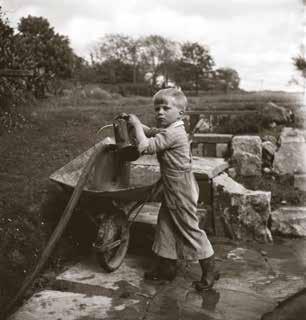
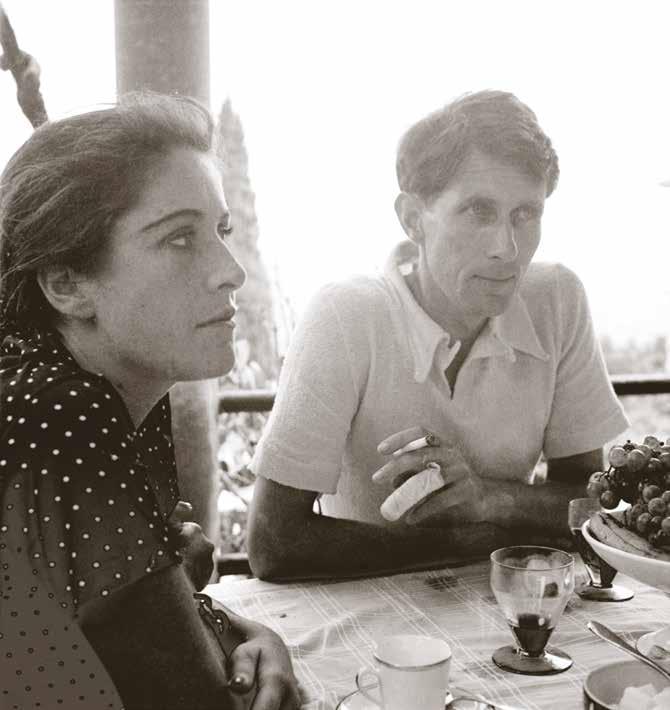
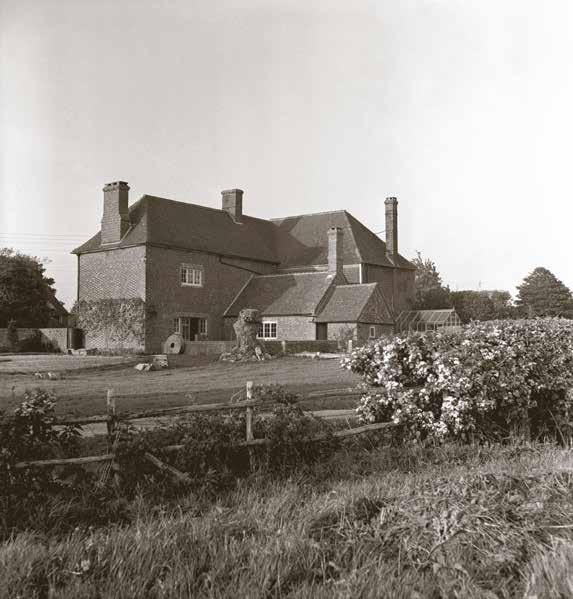
view she made an ink pointillist drawing and then turned south to draw the tiled roof of a farm building in the same manner. Maybe there were showers that day as it seems she worked from inside the house. Lee photographed1 her drawing from the window of the parlour, a room added by Roland in 1954. Dora returned Lee’s compliment by making a deeply sympathetic pointillist portrait of Lee. Dora, who re-met Lee at the Liberation of Paris, had through her own experience a clear understanding of the acute emotional pain Lee was suffering as a result of her war work. In the years that followed Dora became increasingly reclusive.
Lee stayed in touch as best she could, but sadly in Lee’s final years these two women saw little of each other.
Our other visitors in January 1950 were Oscar Dominguez, the painter who originated from Tenerife and came with his wife, the painter Maud Bonneaud. Oscar, afflicted with a disease that distorted the shape of his face could have been a little scary but clearly his charm must have won through as I recall not a trace of trauma. He gave me a little painting of a fantastic car sprouting flowers, dated 1948. Sadly, the wonderful works by him that Roland owned are no longer part of our collection but the car still rolls along.
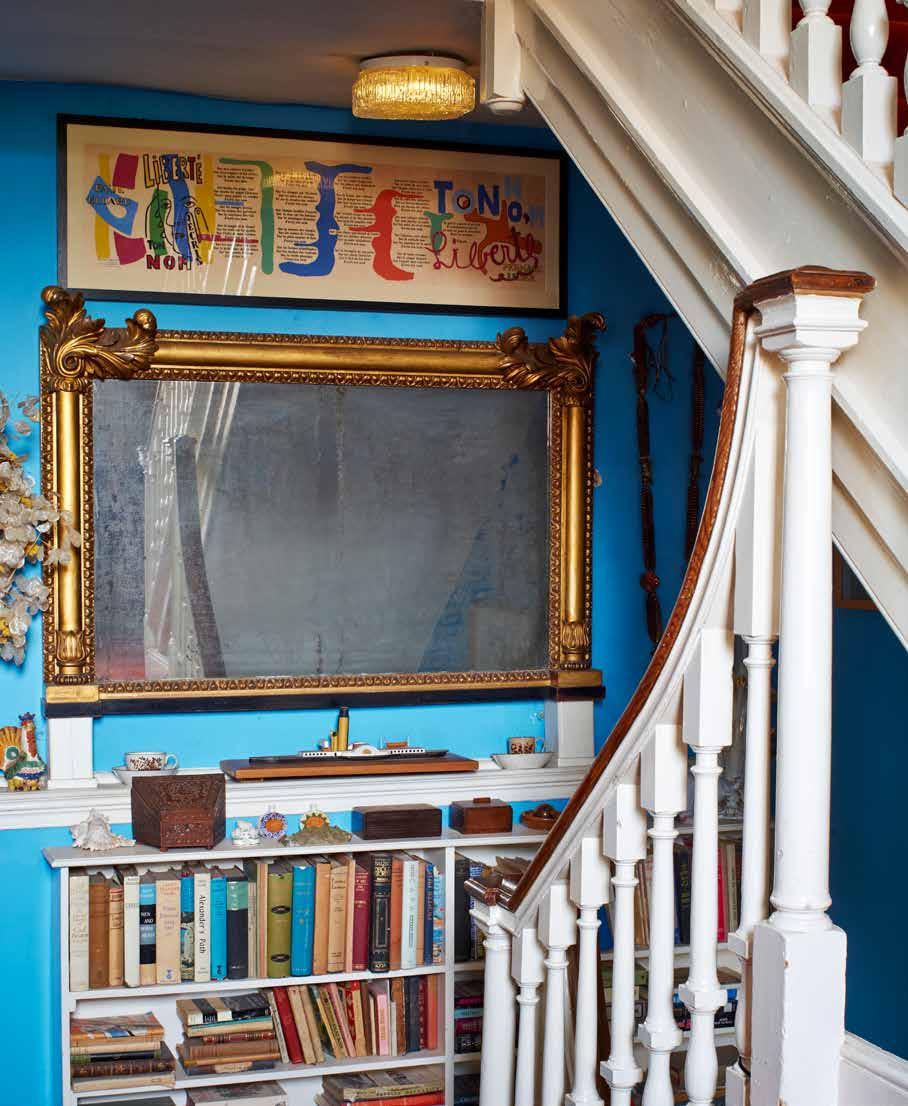
by Tony Tree
Paul and Dominique came to Farleys in October of that same year. Paul’s health, never robust after TB in his youth and badly damaged by his wartime suffering, was failing fast.
A month later Valentine, Roland’s ex-wife, a poet and close friend of Paul, wrote from Paris;
Dear Roland and Lee,
What a terrible day! Yesterday Paul was doing better; I had phoned him. Dominique had told him you sent your love and had embraced him from you. And that was it… he died this morning at 8:30, after reading the newspapers. It didn’t take long—it was over in 30 seconds. Snow was falling in huge flakes, the way he loved it. …
It was 18th November 1952. Paul will never be absent from the lives of our family. Today a framed copy of Liberté j’ecris ton nom, illustrated by Fernand Leger, hangs where Roland placed it on the stairs at Farleys. Liberté… remains one of the most emotively powerful poems ever written, yet in literal terms it makes no sense at all for that is the manner of surrealism. It ends;
And by the power of a word I recommence my life I was born to know you To name you Liberty.
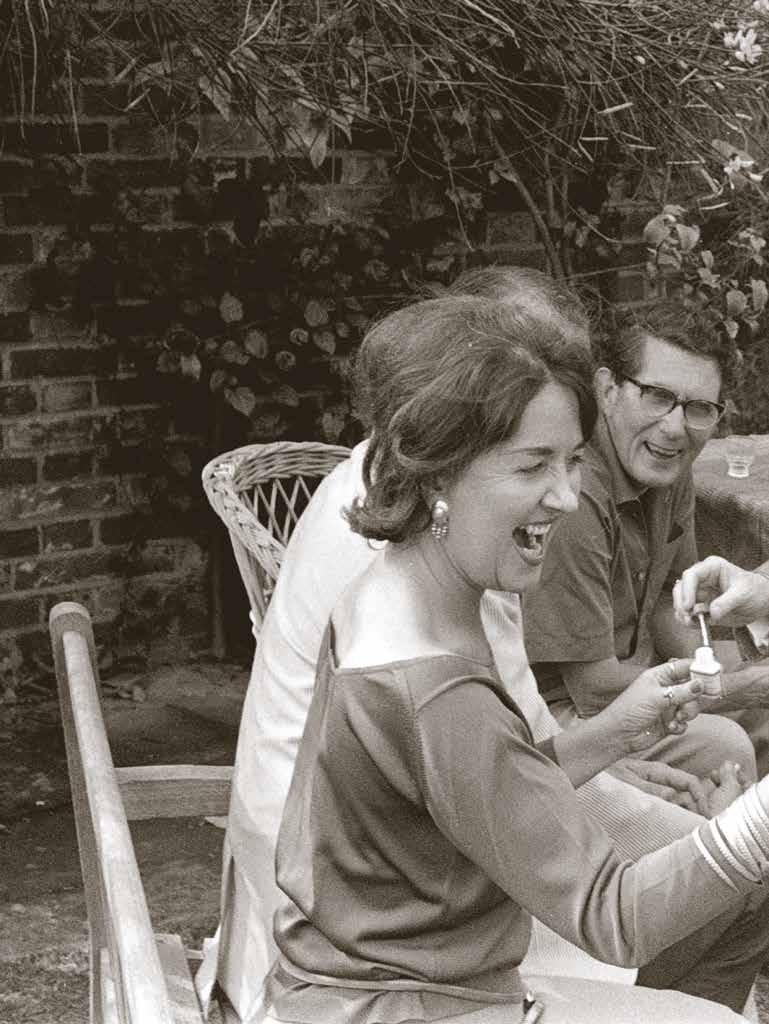
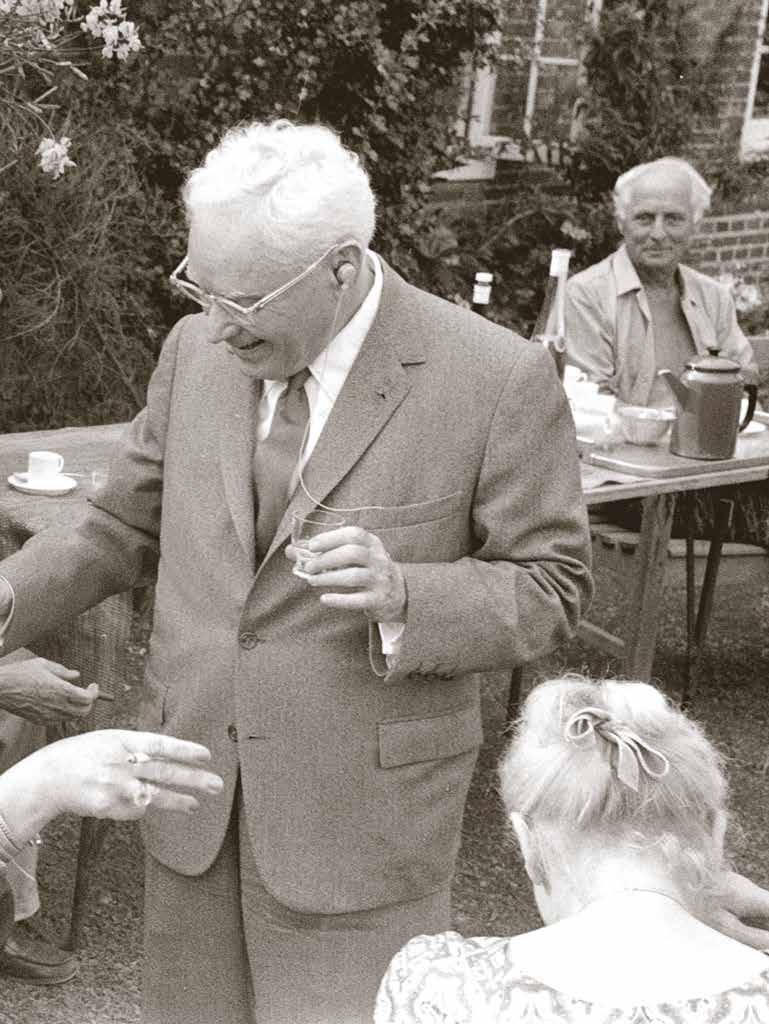
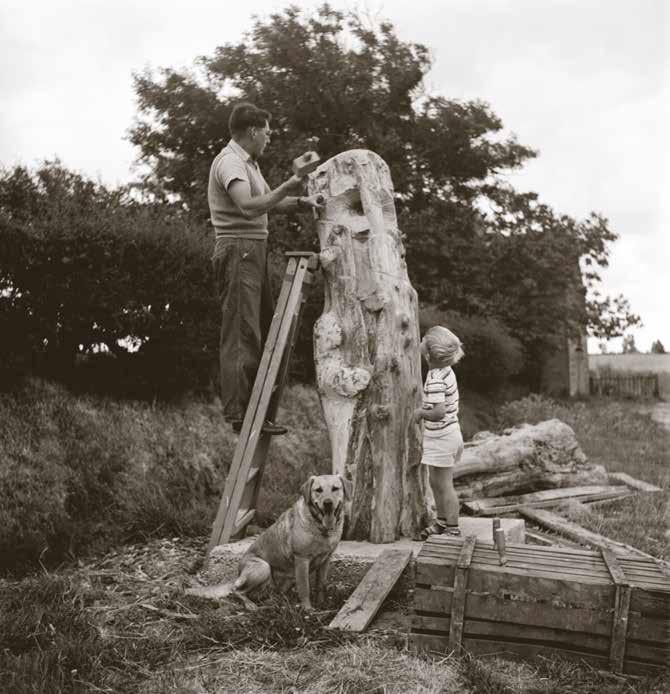
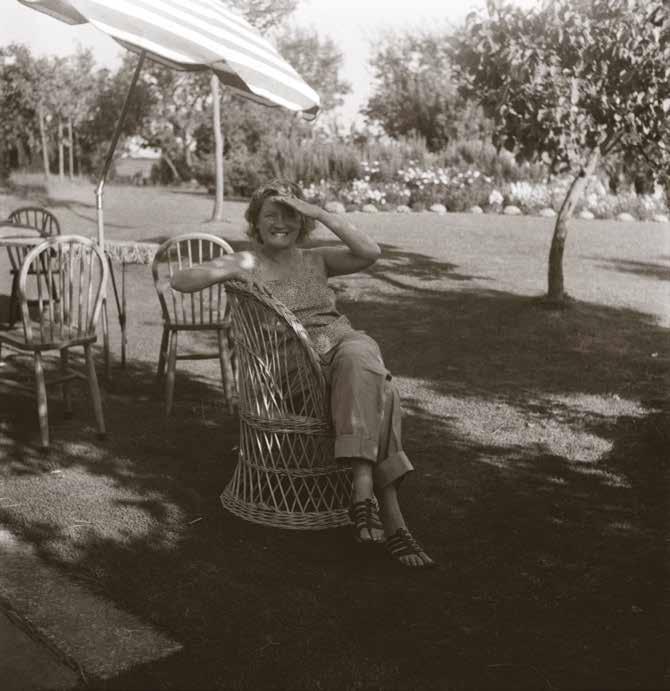
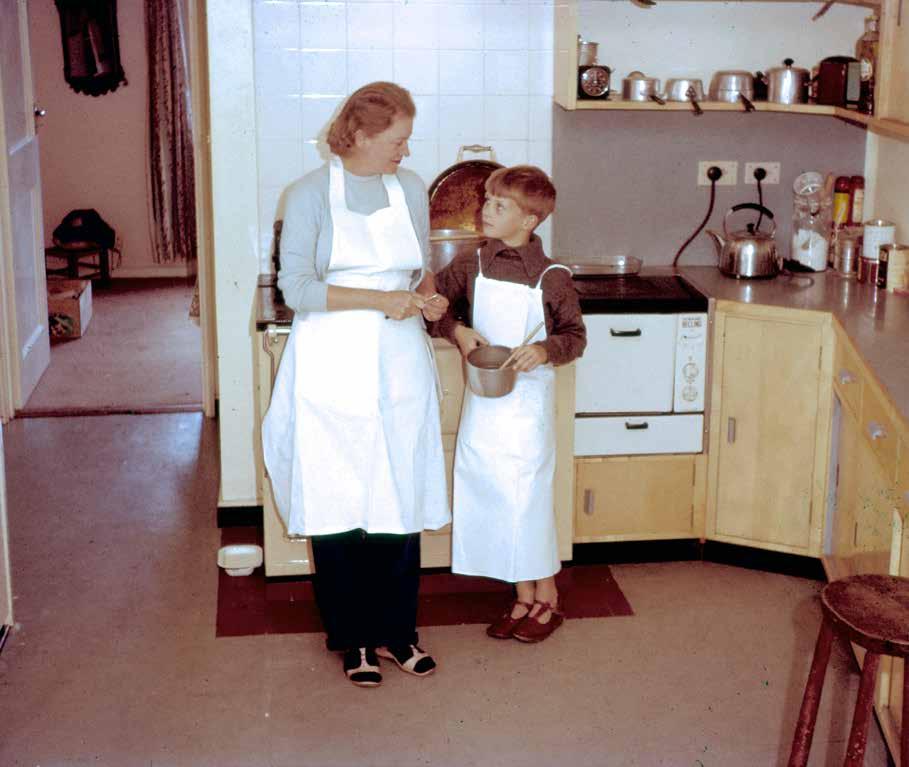
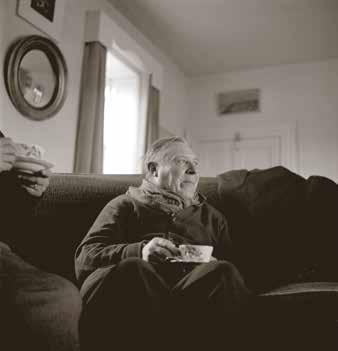
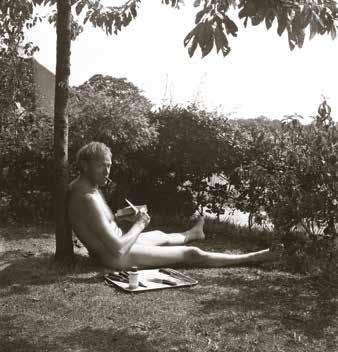
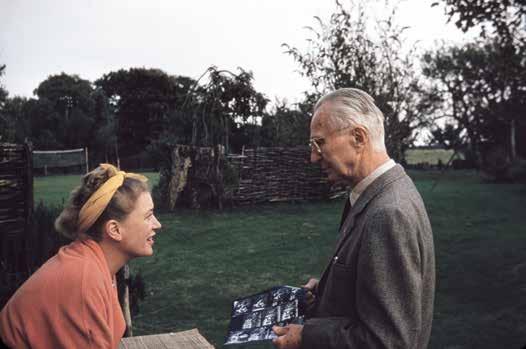
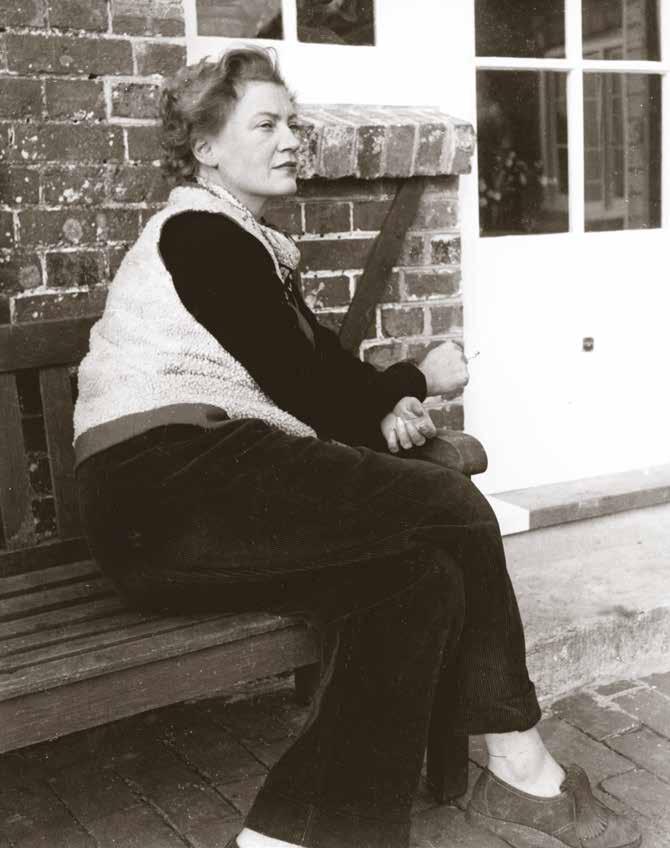
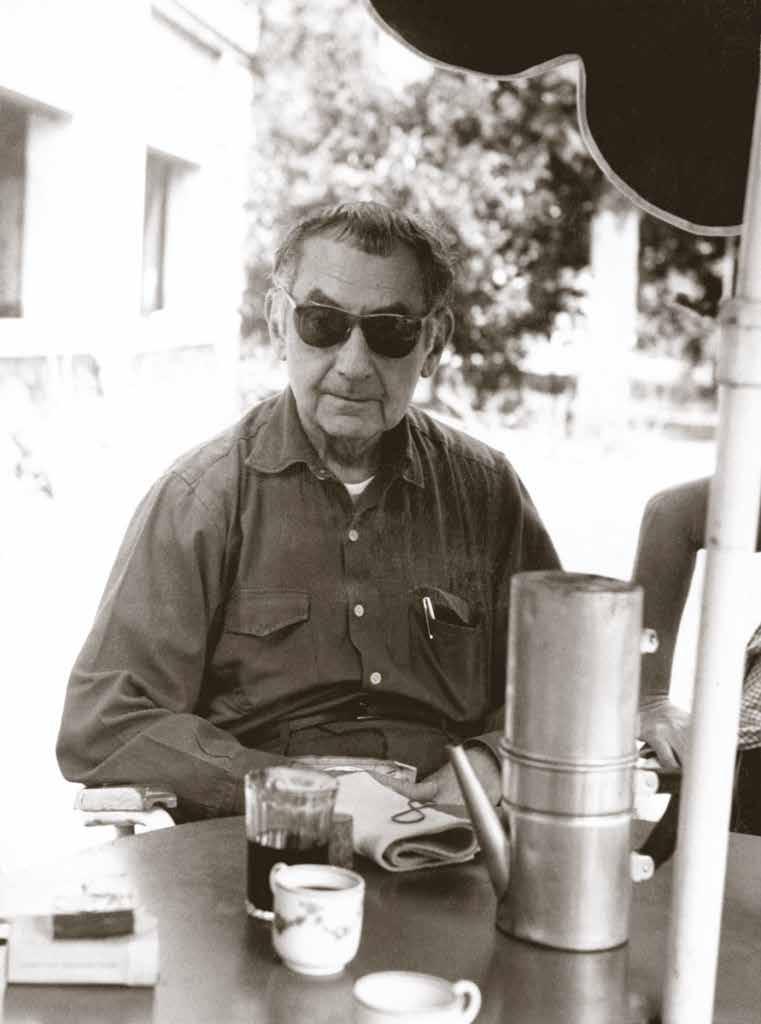
Man Ray was not very tall. He had big spectacles and his bushy eyebrows made him look a bit like an owl. He always wore a French beret when he went out and he seemed much more French than American. When he spoke English he had a strong accent like the New York gangsters in the movies, but that is where the similarity ended because he was funny and gentle and I liked him very much. When I was little, he was not ‘child friendly’. I don’t think he could see the point of small children but as I grew older, I found a different side to him. Together we built a model of a medieval siege catapult on the kitchen table capable of flicking dried beans across the room. We were having a great time until my mum got cross and made us stop.
His intense creativity was evident in his prodigious output of works of art. In the post war years his photography slowed down but not so his painting or the flow of his objects. Once carelessly scattered around his studio, they are now enshrined in private collections and top museums but I do remember one piece that did not make it into a museum. It was his device for swatting flies. I was surprised he knew so much about flies; their habits, the field of vision from their compound eyes, their flight technique. I guess when he was young and poor, he had had plenty of time to study them. His fly swat invention was a length of elastic rubber from a broken chair. He stretched it back, took careful aim, let go and splat! Even in my hands it worked every time and our success was marked by us getting a frightful telling off from the grown-ups for the splat marks all over the walls.
Man Ray’s first visit to Farleys was in October 1954. Roland, my dad, had invited him to give a lecture at the
ICA1, titled Painting of the Future and The Future of Painting I was too young to go but knowing Man Ray it would have been full of enigma and outrageous puns.
We can see from Lee’s photos that Man Ray is not a country boy. He does not even look comfortable in the garden, and Roland confirmed Man Ray’s dislike of rural life on his first visit with a walk round the farm. Roland loved all aspects of nature and his walks were more like a forced march of at least an hour and a half, with complete disregard to the weather. Man Ray was kitted out with wellies and a big oilskin coat and off they went. The rain lashed down and darkness came early. Roland, realising Man Ray was suffering took a shortcut home across a field where our cows had recently grazed kale in heavy rain. It was a bad move. Our clay makes the stickiest, deepest mud, favoured by the brick and tile makers of the 19th Century and Man Ray really struggled. He arrived back at the house exhausted, plastered in mud and determined to never venture out doors until the next drought.
Man Ray had been the lover and photographic partner of my mother in the 1930’s. In 1946 whilst in California he met and married Juliette, a woman of great grace and beauty, a dancer with Martha Graham’s company. Juliette and Lee became very fond of each other, a mirror image of the deep friendship between Roland and Man Ray. A French friend, marvelling at the closeness between Roland and Man Ray opined “The shortest distance between two men is the love of the same woman”2. The opposite polarity of that wisdom applied equally to these two women.
Man Ray, La Brosse, France by
Antony Penrose
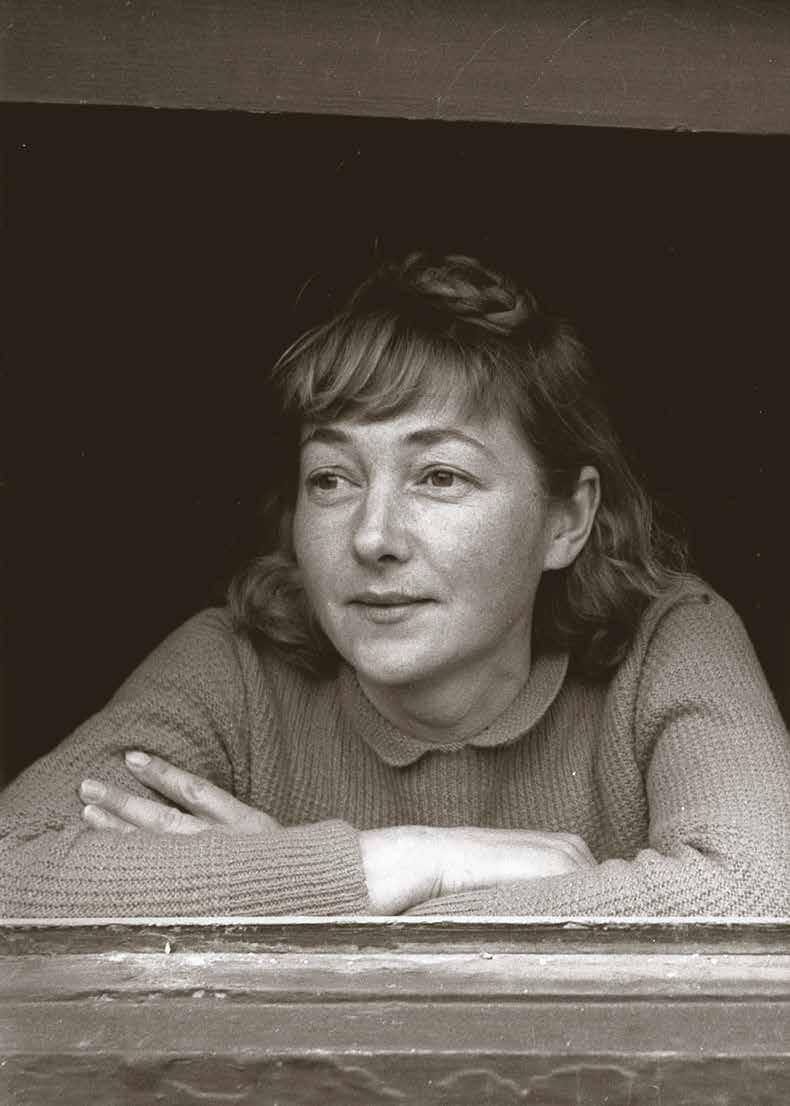
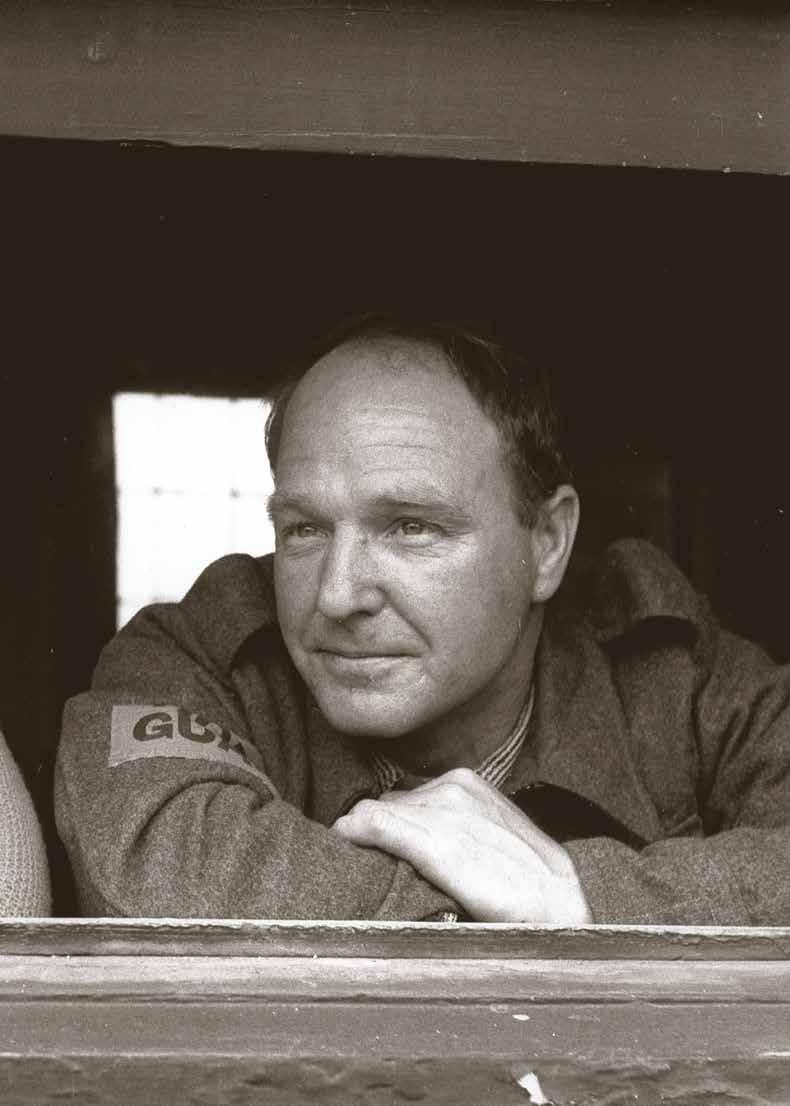
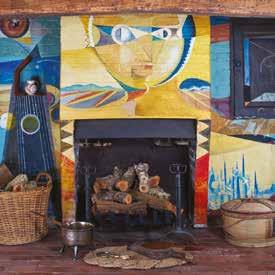
Farley Farm with its bleak looking house did not immediately offer home comforts but photographer, Lee Miller and painter, Roland Penrose saw the potential it held in 1949 and it immediately became the focus for visits from leading artists, curators, poets and authors of the time. Although secluded, Farleys enjoyed good connections to rail, road and cross channel ferries. In the austerity of the post-war years it provided plentiful food for Lee to create imaginative menus for their many friends. No-one came with the expectation of a quiet country house weekend but did they know they would be required to help with a great many tasks including digging fish ponds, upholstering chairs or preparing the produce of the farm and garden? At times Farleys had the air of an artist’s commune, with everyone good-humouredly contributing their labour. There was always lively chatter and endless discussions about how best to, salt green beans, or fix the ancient kitchen stove evolving into conversations and arguments about art or the latest gossip from London, New York and Paris, seamlessly continued over lunch through to dinner. Friendships, love affairs and collaborations were formed, some of the latter leading to important artistic developments. Exhibitions and publications emerged out of the cigarette smoke and bonhomie of good food, well-chosen wines and a web of mutually supportive friendships enjoying surreal weekends in the Sussex countryside. Roland and Lee’s move to Farleys was not to settle down but to create, entertain & inspire. Their son Antony Penrose recalls some of their visitors in the 1950’s with a fascinating insight into his parent’s surreal idea of a weekend in the country and their transformation of Farleys from a traditional farmhouse to a hub of art with unexpected decor & surreal living.
